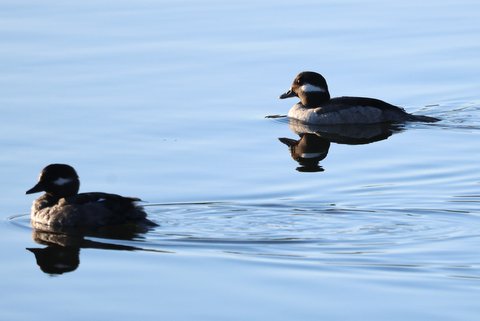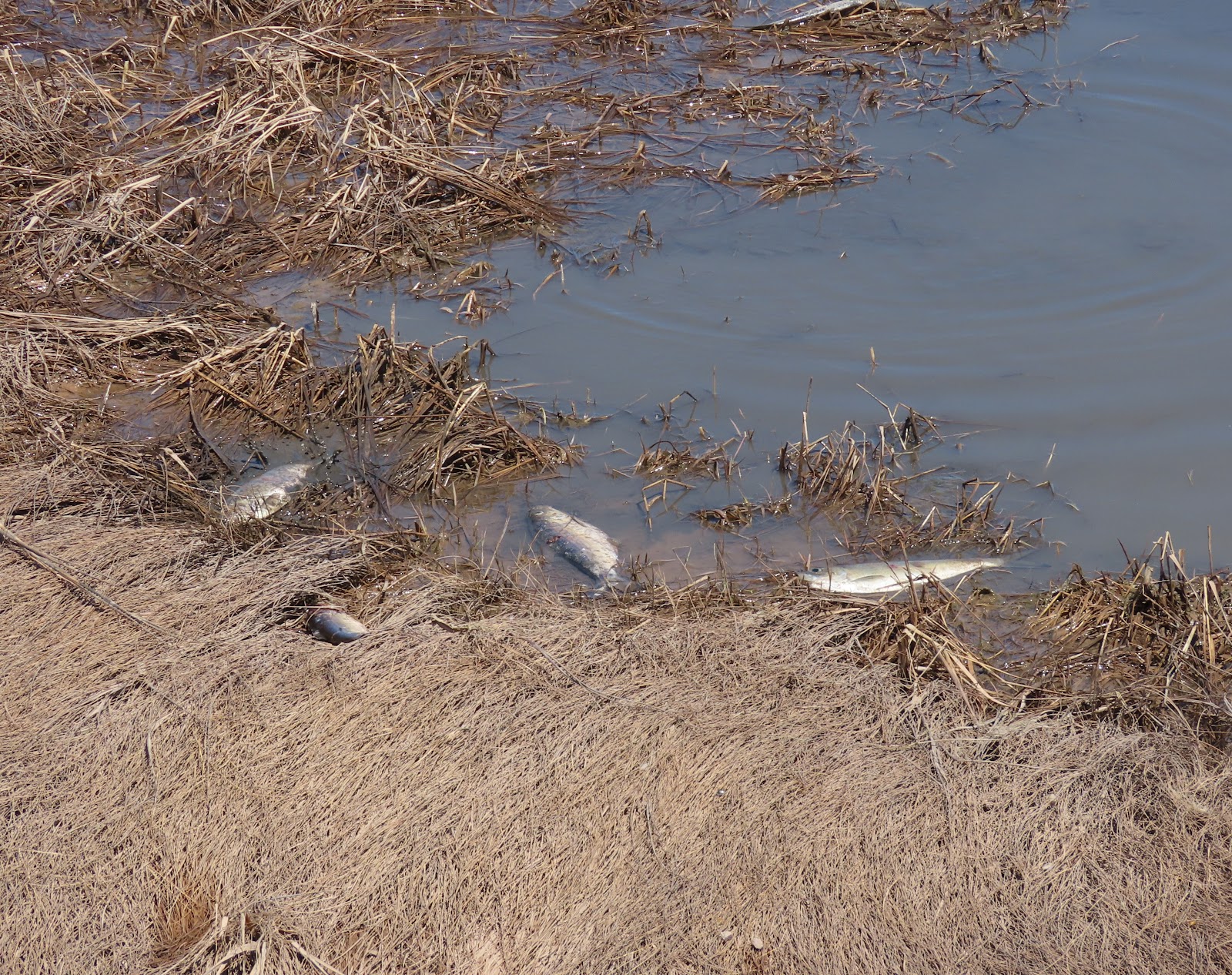NATURE
MONCTON NATURE NEWS
May 2, 2025
Nature Moncton members, as
well as any naturalist in New Brunswick or beyond, are invited to share
their photos and descriptions of recent nature sightings to build a fresh
(almost) daily edition of Nature News.
To
respond by e-mail, please address your message to the information line
editor, nelsonpoirier435@gmail.com .
Please
advise the editor at nelsonpoirier435@gmail.com and the proofreader
Louise Nichols at Nicholsl@eastlink.ca if
any errors are noted in wording or photo labelling.
For more information
on Nature Moncton, check the website at www.naturemoncton.com
Proofreading
courtesy of Nichols nicholsl@eastlink.ca
To
view the live feed of the Peregrine Falcon nest cam on the summit of Assumption
Place in Moncton, go to:
**The warblers are en route/arriving!
John Inman had a visit from a northern
parula warbler on Thursday morning to provide an excellent photograph of
its arrival.
**Eastern bluebirds are being welcomed as
well.
Norbert Dupuis had a male eastern bluebird
drop by his Memramcook East yard on Thursday to check in on the possibilities
of a summer cottage.
Norbert also photographed a posing chipping
sparrow in his yard.
**Shannon Inman went out on the Shepody Marsh
just after the tide receded to check on bald eagles and found a lot of fish left
high and dry, making for an easy meal for the eagles and gulls.
(Editor’s note: This would explain the large
number of eagles in the area. The fish photographed appears to be a gaspereau.
One would have to wonder if these fish were caught live by the eagles, or some
may have been stranded on shore after high tides to create the feeding frenzy.)
**“Richard
Blacquiere reports seeing his first female red-winged blackbird in
Hampton on April 30 this year. In this area, females typically arrive 4 to 6
weeks after the males, so they’re on schedule with the males arriving back in mid-to-late March.
On May 1, Richard was lucky to have two buffleheads land close to the lagoon fence, which allowed for some clear photos of a female
accompanied by an immature male. There appear to be several young male buffleheads in the lagoon this year.
A ruddy duck has been in
the 3rd pond at the lagoon since at least April 19, but Richard has
yet to get a decent photo.
Finally, the daily turkey vulture
numbers fluctuate, but it’s not uncommon to see 40 to 50 congregating at or
near the first lagoon pond by the parking area in the early morning.
(Editor’s note: Richard's photo of the two buffleheads is one that we should all take note of. The male bufflehead takes two years to
develop adult plumage, a scenario we often forget, and call all specimens with
a white patch on the side of the head female. The first-year male bufflehead
does resemble the female; but at this time of year, the white patch on the side
of the head is much more distinct and obvious, as Richard’s photo shows with
the two side-by-side.)
**On Monday morning, Brian Stone headed out
to the Jemseg area (after visiting with the barnacle goose at McGowens Corner)
and did his best to get 1,000 photographs of some of the many dozens of painted
turtles sunning themselves there in several of the large ponds in the area.
Even though he was scooped by Jane LeBlanc with her excellent turtle and osprey
photos on Wednesday from the same area, Brian still sends his best examples of
the large number of turtle photos he ended up with for people to enjoy. His
osprey and other wildlife photos from that day will show up in a later edition
of Nature News.
(Editor's note: the editor really did a significant cut of those 1000 turtle photos to not compete with National Geographic, but six just had to stay!)
**This Week’s Sky at a Glance, 2025 May 3
– May 10
Happy Astronomy Day! It is easy to be overwhelmed by the night sky when you are
just getting into astronomy as a hobby. A good starting point which requires no
equipment is to learn and pick out the constellations. Theoretically, we can
see all or parts of 66 of the 88 constellations from New Brunswick. An initial
goal of 50 is doable over a year, and challenging if you live in a light
polluted area. Meteors require no equipment and a few appear every hour in a dark
sky. Try for 25 or 50 in a year, knowing you can pad your total during several
annual meteor showers, especially in mid-August and mid-December. It helps to
maintain a record of your observations, including dates, times, locations, what
you observed and any other details you want.
The Royal Astronomical Society of Canada (RASC) has observing lists for various
levels of experience, accessible through their website (rasc.ca) under the
Observing tab. There are three programs for beginners, including two for
exploring features of the Moon using binoculars or a small telescope. The other
is the Explore the Universe Program, which includes 110 objects in five
categories: Constellations and Bright Stars, the Moon, Solar System, Deep Sky
Objects, and Double Stars. By finding and recording your observations for half
the objects in each category of this program you can apply for a certificate
and pin. You can download the lists for the other programs but the certificates
and pins are for members only.
This Week in the Solar System
Saturday’s sunrise in Moncton is at 6:02 and sunset will occur at 8:30, giving
14 hours, 28 minutes of daylight (6:09 and 8:33 in Saint John). Next Saturday
the Sun will rise at 5:52 and set at 8:39, giving 14 hours, 47 minutes of
daylight (6:00 and 8:41 in Saint John).
The Moon rides above Mars this Saturday
evening to highlight Astronomy Day, and it is at first quarter on Sunday with
the Lunar X being visible around 9 pm. The Moon is near Regulus on Monday and
Spica on Friday. Mars is within a binocular view of the Beehive star cluster
all week, passing through the upper portion over the first few evenings. Jupiter
is still in good position for twilight observing between the horns of
Taurus, setting around 11:30 midweek. Saturn is within a wide binocular view
of bright Venus in early morning all week, while Mercury is lost in the
twilight glow. The Eta Aquariid meteor shower peaks this Tuesday morning, with
the radiant rising in the east around 3 am.
The Saint John Astronomy Club meets in the
Rockwood Park Interpretation Centre this Saturday at 7 pm. Tune in to the
Sunday Night Astronomy Show at 8 pm on the YouTube channel and Facebook page of
Astronomy by the Bay.
Questions? Contact Curt Nason at nasonc@nbnet.nb.ca.
Nelson Poirier.
Nature Moncton














